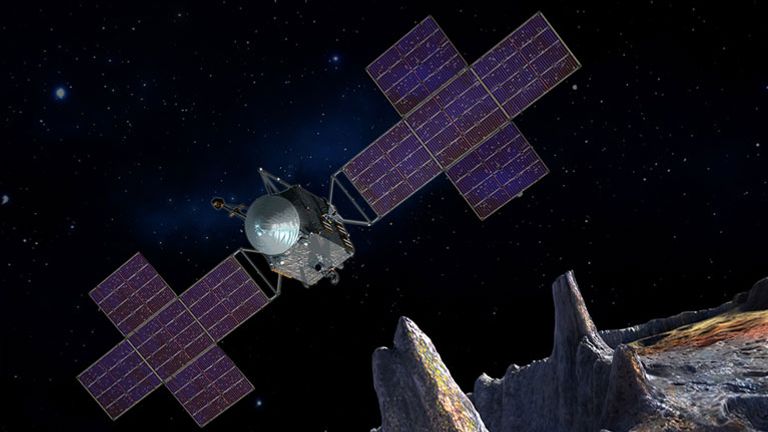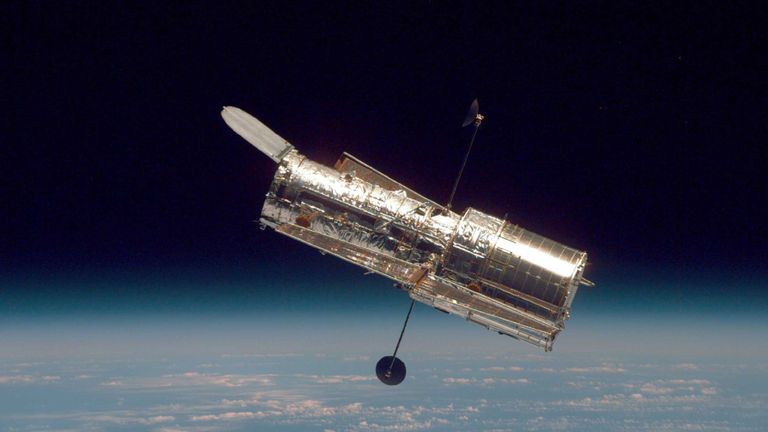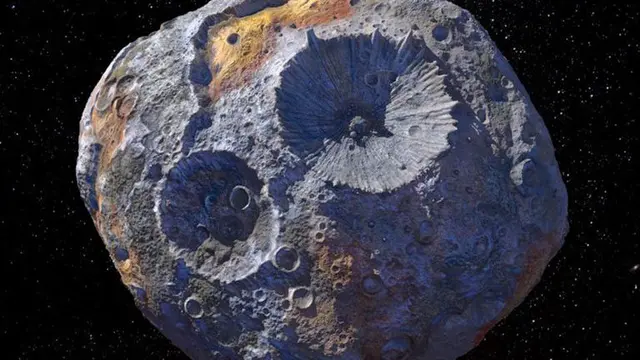An asteroid made of iron and nickel first discovered in 1852 could have been a protoplanet, according to scientists.
The Hubble Space Telescope was used to study the asteroid, named 16 Psyche, during two points in its rotation.
Dr Tracy Becker, a scientist from the Southwest Research Institute, said: "We've seen meteorites that are mostly metal, but Psyche could be unique in that it might be an asteroid that is totally made of iron and nickel."

Image:NASA plan to study the asteroid in a 2026 mission. Pic: Maxar/ASU/P. Rubin/NASA/JPL-Caltech
She added: "Earth has a metal core, a mantle and crust. It's possible that as a Psyche protoplanet was forming, it was struck by another object in our solar system and lost its mantle and crust."
Findings from the observation suggest that its entire surface could consist of iron - however, scientists warned that small amounts of the metal could be dominating these observations.
"We were able to identify for the first time on any asteroid what we think are iron oxide ultraviolet absorption bands," Dr Becker said.
"This is an indication that oxidation is happening on the asteroid, which could be a result of the solar wind hitting the surface."
The asteroid, which is the largest piece of space debris in the asteroid belt between Mars and Jupiter, also became more reflective at deeper UV wavelengths.
Dr Becker said this could indicate how old it is as "this type of UV brightening is often attributed to space weathering".

Image:The Hubble Space Telescope was used to study 16 Psyche
The space debris is estimated to be worth $10,000 quadrillion - around 10,000 times more than the global economy and five million times more than the UK's GDP of more than £2trn.
Its value is attributed to its composition as most asteroids are either rocky or icy, with little metal.
NASA
plans to send a spacecraft to orbit the asteroid, which has a diameter of approximately 140 miles, to help understand the origin of planetary cores.
The mission, named Psyche, will launch in 2022, with the spacecraft reaching the asteroid in 2026.
Dr Becker added: "What makes Psyche and the other asteroids so interesting is that they're considered to be the building blocks of the solar system.
"To understand what really makes up a planet and to potentially see the inside of a planet is fascinating.
"Once we get to Psyche, we're really going to understand if that's the case, even if it doesn't turn out as we expect."
The research has been published in the Planetary Science Journal.
 简体中文
简体中文

